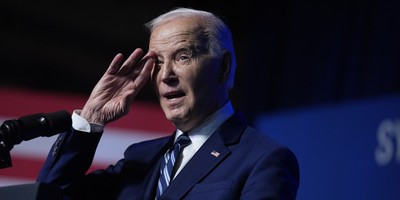Editor's Note: This piece was coauthored by Ed Feulner.
You can’t put a price on education, the saying goes, but if you did, it would be very high. And the cost falls on everyone.
Indeed, our economy is hampered by a two-pronged higher education problem: collectively, Americans have racked up some $1.4 trillion in outstanding student loan debt. At the same time, that debt has been amassed by those who drop out before earning a degree and by those earning degrees with limited utility in the market.
Yet, despite growing evidence that generous federal subsidies have driven tuition increases, policymakers continue to subsidize increases in college costs, instead of tackling the drivers of student debt. Easy access to federal student aid has enabled colleges to raise tuition profligately over the past several decades. When combined with generous loan forgiveness policies, which must be paid for by taxpayers, the result has been a three-fold increase in the cost of college since the mid-1980s.
Economist Richard Vedder found that, had tuition and fees at colleges and universities grown at a rate similar to the growth prior to 1978 – before there was significant federal subsidization of tuition – college costs at state universities would be closer to just $5,000 today.
The Higher Education Act (HEA), first passed in 1965, is the trough at which universities feed. The HEA authorizes multiple federal student loan programs, as well as the federal Pell Grant program and the federal work study program.
Recommended
The HEA isn’t a safety net of last resort for students who cannot afford college; it is a luxurious hammock in which students can repose, accessing subsidized student loans with few if any credit checks or examination of their ability to repay. The federal government originates and services 90 percent of all student loans, crowding out the private lending market and placing taxpayers on the hook for student loan defaults and loan forgiveness policies.
This vicious lending-and-spending cycle serves no one well – save university administrators. The federal government makes loans available to anyone, universities raise tuition fully aware of the ease with which the federal government provides the loans -- and students borrow more and more to finance college.
The best way we could begin lowering college costs would be to dramatically curtail federal student loans. Although the PROSPER Act now before Congress doesn’t fully achieve this goal, it does begin reforming the HEA in a way that will lower costs for students and unburden taxpayers.
The bill would create a single loan option for borrowers, simplifying the current nine convoluted repayment options into just two: a standard 10-year repayment plan and an income-based repayment option. Perhaps most significantly, the proposal would eliminate loan forgiveness programs. Today, students can have their loans forgiven after 20 years – a figure which drops to just 10 years if a student enters government or non-profit work after college.
The Congressional Budget Office estimates that American taxpayers are set to lose $108 billion over the next decade due to loan forgiveness policies. Loan forgiveness unfairly shifts the burden of paying for college from the student to the taxpayer, more than two-thirds of whom do not hold bachelor’s degrees themselves. At the same time, such practices enable universities to raise tuition, knowing that students will have their loans forgiven in due time.
Importantly, in addition to ending generous loan forgiveness policies, PROPSPER would also eliminate the in-school interest subsidy, which costs taxpayers nearly $8 billion per year, and isn't well-targeted to low-income students.
Although there is more work to be done to really cut college costs, consolidating student loans, eliminating loan forgiveness, and eliminating in-school interest subsidies provides a long-overdue step toward resetting college pricing. Encouraging private lending to reemerge would also help.
Additional reforms to accrediting processes that include alternative education opportunities, without expanding arbitrary power to executive branch officials, are among PROSPER’s further moves in the right direction.
However well-meaning federal policy on education, it’s clearly making the problem worse. It’s time for lawmakers to show that they’ve learned this very expensive lesson -- and help make college more available and more affordable once again.
Rep. Virginia Foxx,Chairwoman of the House Committee on Education and the Workforce,represents North Carolina’s 5thdistrict. Ed Feulner is the founder of The Heritage Foundation.






















Join the conversation as a VIP Member